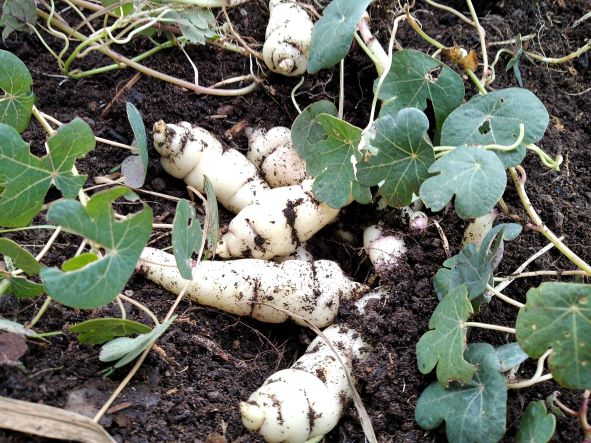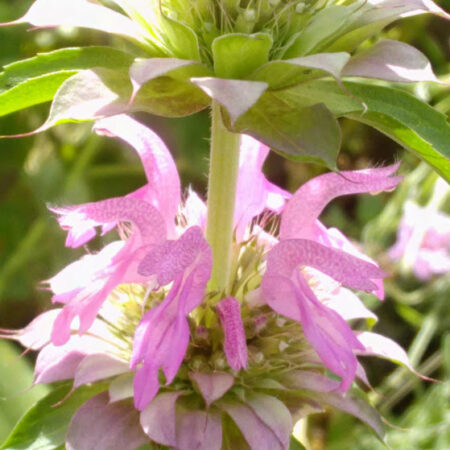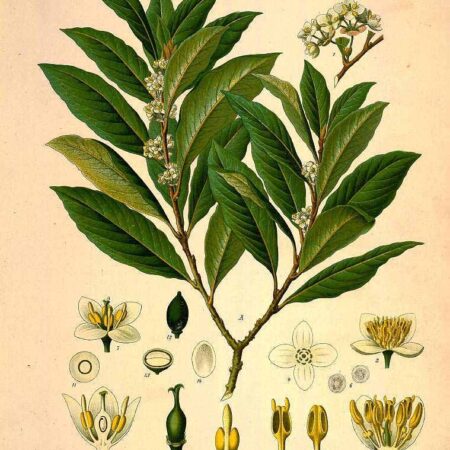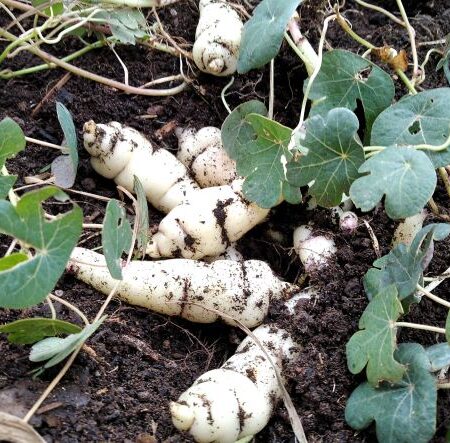Description
Mashua, also known as tuberous nasturtium (Tropaeolum tuberosum), is an Andean root crop with a long history of cultivation stretching back thousands of years. A relative of the common garden nasturtium, Mashua is vigorous, scrambling, or climbing up to 2–3 m with the help of supports. Its rounded leaves resemble those of nasturtiums, and in summer to autumn it produces striking orange-red to scarlet flowers that are also edible and attractive to pollinators.
Underground, Mashua forms clusters of elongated, knobbly tubers that range in colour from cream to orange, red, or purple, often with marbled markings. These tubers are harvested in late autumn to early winter once the foliage dies back. Traditionally grown in the high Andes, Mashua thrives in cool, moist conditions and has natural resistance to pests, thanks to high levels of glucosinolates that deter insects and even rodents. This makes it an excellent companion plant in the vegetable garden, particularly near potatoes and brassicas.
The tubers are nutritious, rich in vitamin C and beneficial phytochemicals, but are usually cooked to reduce their peppery, mustard-like flavour. They can be roasted, boiled, or stir-fried, and develop a sweeter, nuttier taste when exposed to frost before harvest. Flowers and young leaves are also edible, adding a peppery bite to salads. Medicinally, Mashua has been used traditionally for its antimicrobial and anti-inflammatory properties, and in folk medicine was considered to help balance hormones and support urinary tract health.
In New Zealand, Mashua grows well in most regions but is sensitive to heavy frost. In colder areas, tubers should be mulched or lifted and stored in a cool, dry spot. It can spread readily once established, so some gardeners prefer to grow it in contained beds. With its dual role as a striking ornamental and a productive edible crop, Mashua makes an unusual and rewarding addition to the food and medicine garden.








Reviews
There are no reviews yet.